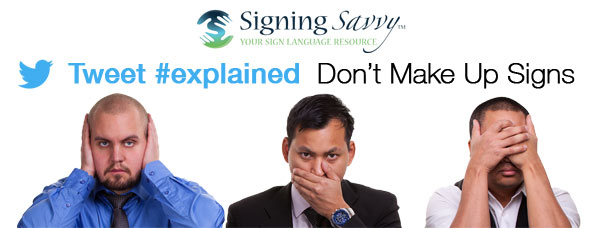
Tweet Explained: Don't make up signs
We are constantly posting tips, facts, and learning resources related to sign language and Deaf culture on our Twitter @SigningSavvy. Occasionally we get questions about our tweets and explain them further with a followup article, like this one.
@SigningSavvy Tweet:
Tip of the Day: Don't make up signs. It's an insult to ASL and the Deaf community. #Interpreters
— Signing Savvy (@SigningSavvy) February 23, 2015
Explained:
A tweet can only be 255 characters, so they tend to convey general information and often do not go into detail or include specifics. We went straight to our Sign Language Advisory Board with this question so we could get a variety of opinions and some clarity on this topic.
The Advisory Board agreed: Hearing people should not make up signs.
However, there are some exceptions for when creating signs is acceptable. Advisory Board Member Suellen Bahleda said, "There is an essential difference in 'making up signs' and creating agreed upon contextual-use signs for a particular time and context."
Like any language, sign language evolves over time and, of course, new vocabulary is accepted as part of sign language. So who is able to and when is it generally appropriate to create signs? Here are a few examples…
Deaf and Hard of Hearing Community
Sign Language is the language of the Deaf. As a community, the Deaf do make new signs, that is how sign language evolves. Hearing people or a single deaf person would not create a new sign and expect for it to be universally accepted.
“New signs come into being all the time. The technical field is one glowing example of this. The signs coming from college students at Gallaudet are just amazing. We see signs today that we did not see 20 years ago and we don't see signs that were in use 40 and 50 years ago. This is the natural evolution of any language. But it must come from within the community. One person alone cannot invent a sign that must automatically be accepted by the whole community. Most often it is a sign that evolves from one situation and then gets generalized and accepted.” - Advisory Board Member Diane Morton
Name Signs
Names are fingerspelled. You do not invent your own name sign. Members of the Deaf community often give each other sign names. There are two kinds of name signs: descriptive and arbitrary. Name signs often include the first letter of your name, plus a descriptive feature about yourself. For example, if you have curly hair, your sign name may be a combination of the first letter of your name and the sign for curly hair. Some names are arbitrary, rather than descriptive, and are simply the first letter of your name signed in one of the accepted locations.
Culturally, it is not appropriate to pick your own sign name and only Deaf people assign sign names. Even if you have a name sign, when introducing yourself, you would still spell your full name first and then show the sign name. Once people know who you are talking about, the sign name makes it easier and more personal to refer to the person during the conversation.
Descriptive name signs are sometimes given to hearing sign language students for use in the classrooms. They should not be used outside of class.
Find out more in our article on Signing People’s Names
Home Signs (and Baby Signs)
Home signs, also sometimes called kitchen signs, are signs made up at home. Deaf children with hearing parents who are isolated from a sign language community may use many made up home signs because they don’t have access to learn real sign language. As they get access to a sign language community, they usually learn and adopt the real signs and no longer use the home signs they made up prior to having limited access to sign language.
In general, it is frowned upon to use made up or home signs because sign language is a real language and its vocabulary is its signs. Similarly, when speaking English, it is proper to use English words and not make up new words. There are new English words that become accepted as part of the language, but just as with sign language, it is after they have become widely accepted and commonly used.
However, as one of our Sign Language Advisory Board Members said, “I think we all might have home made or baby signs that we only use with family members in specific context.” Signs created with family members are are not meant to be publicly used. An English example of this could be if you have a special made-up name or term you use for a child’s blanket - you may use that term at home and your family members know exactly which blanket you are referring to, but in public you probably just call it a blanket.
Missing or Non-Existent Signs
If there is a sign, you would always use the sign and never make up a new or different sign. However, there isn’t a sign for every English word. New signers sometimes think there isn’t a sign because they are stuck on thinking about the English word instead of the meaning of the word. First you would always think about the meaning that is trying to be conveyed to think if there is a sign that you can use in context of what you are trying to say. If there isn’t a sign, then you would finger spell the word.
One concern with making up signs is that even someone who knows sign language, may not know every sign, especially if they are not part of a sign language community where they sign regularly. There may be a sign for the meaning they are trying to convey and either they can’t recall what it is or they are unaware that there is already a sign for it.
Rather than make up a sign:
- Consult the Signing Savvy dictionary. Double check the sign type, sign notices, and as-in meaning to make sure it is appropriate for your given usage. If you can't find the word, look for words with similar meanings.
- Consult with individuals who are deaf and hard of hearing and part of a sign language community.
- When in doubt, finger spell the word.
Short Term Contextual Usage
There are some times when signs may be created and used for a specific contextual use for a particular time and context. Examples include during a class, team events, or work projects.
Several of our Sign Language Advisory Board members contributed thoughts on this type of sign creation. Here are some great takeaways:
- There is an essential difference in 'making up signs' and creating agreed upon contextual-use signs for a particular time and context.
- Two people or a small group agree on usage: An interpreter and deaf consumer, or small team working together, work together to create the signs. Agreed upon representational sign(s) are sometimes created for complicated, but mutually understood terms.
- Used only temporary and for a specific purpose only: There is an understanding between the interpreter and deaf consumer, or small team of people working together that the sign(s) are only to be used temporarily for the specific purpose they were created for. So, for example, once the class or work project is over, you would no longer use the signs you created.
- Defining signs as purposeful, agreed-upon, and bearing an expiration date frames the signs and their usage as intentional, contextual, and shared, rather than (somewhat paradoxically) random and regular.
- Creating signs under these circumstances isn’t a true instance of “making up signs” because you are not trying to use them as a regular part of sign language, they are created by or in collaboration with at least one deaf person, and you are setting parameters for the signs’ usage in order to be respectful of sign language.
Summary
There are some circumstances where deaf and hard of hearing individuals may create new signs, but in general you should not make up signs. Just as people would think you were inappropriate if you made up English words, making up signs will get you funny looks as well.
Let us know whenever you have a question about one of our @SigningSavvy tweets and we would be happy to explain it further. Just ask us on Twitter for clarification or use our contact form.
ADVERTISEMENTS
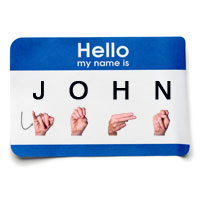 Signing People's Names in American Sign Language
Signing People's Names in American Sign Language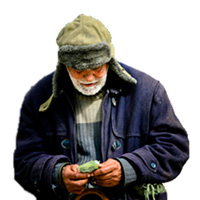 Why Not to Buy Manual Alphabet Cards from Peddlers
Why Not to Buy Manual Alphabet Cards from Peddlers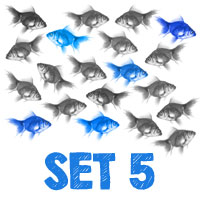 Signs That Are Close... But Not the Same - Set 5
Signs That Are Close... But Not the Same - Set 5

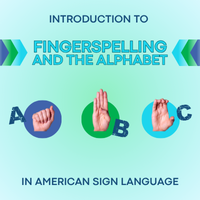
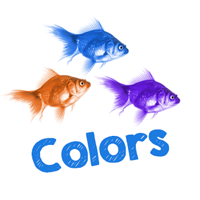

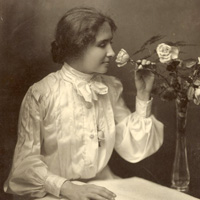
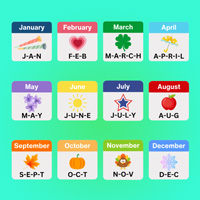

Savvy User ShirleyTuesday, October 6, 2015
Thank you for clarifying this tweet. For a deaf student in a public school classroom, the interpreter should come up with signs for hearing student's names in the room. We can't wait for a deaf person to come up with sign names. In order to cue the deaf student to who is talking, you must quickly develop sign names after fingerspelling the name then giving a sign several times. It is the practical thing to do. There is nothing unethical about assigning names in this way.
Especially in elementary education you have to establish regularly used signs for educational words that are not in any sign dictionaries. You can't just fingerspell so many words for a early elementary students. Maybe the deaf community needs to address this area of signs, so we can use their preferred signs in the classroom setting. I wish I didn't need to create temporary signs.